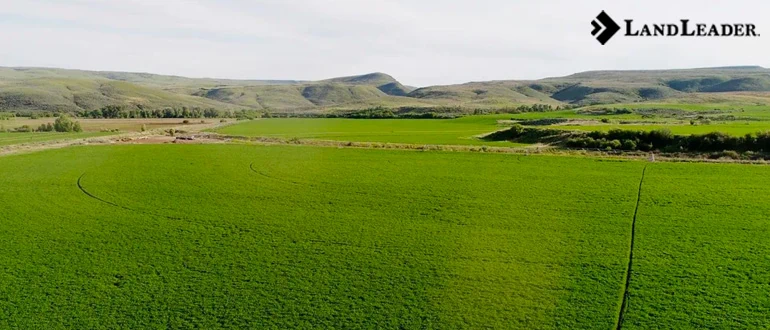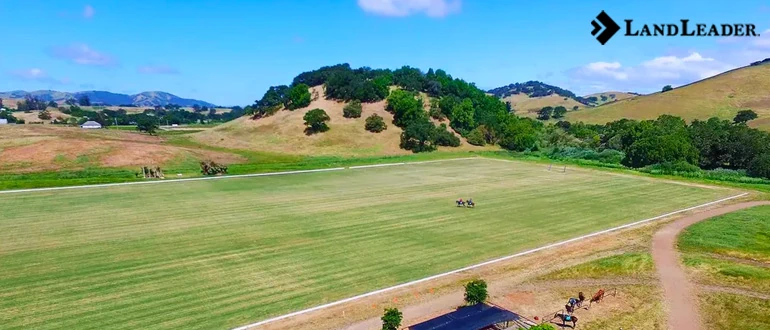
Whether you’re a seasoned farmer looking to expand your operations, an investor seeking a stable and tangible asset, or simply someone with a passion for rural living and sustainable agriculture, this blog is your gateway to discovering your ideal investment opportunity.
In this comprehensive guide on agricultural land for sale in USA, we will explore the advantages of investing in agricultural land, factors to consider when buying, tips for maximizing productivity, understanding zoning regulations, embracing sustainable farming practices, and the role of real estate agents in helping you find your dream agricultural investment
Agricultural Land for Sale in USA: Benefits of Investing in Agriculture Land
Investing in agricultural land in the USA can offer various benefits for investors. Here are some of the key advantages of investing in agricultural land:
Stable and Consistent Returns
Agricultural land investments have a long history of providing stable and consistent returns. Food is a basic necessity, and as the global population continues to grow, the demand for agricultural products remains high. This consistent demand helps ensure a steady income stream for landowners.
Diversification
Investing in agricultural land adds diversification to your investment portfolio. It often performs independently of other financial assets, such as stocks and bonds. This can help spread risk and reduce the impact of market fluctuations on your overall wealth.
Potential for Appreciation
Agriculture land has a history of appreciating its value over time. As urbanization spreads and available land becomes scarcer, the value of agricultural properties can increase significantly. This appreciation potential can offer substantial long-term capital gains.

Income Generation
Agriculture land provides various income-generating opportunities. You can lease your land to farmers or engage in farming activities yourself. Crop production, livestock farming, and even agri-tourism ventures can generate a reliable source of income.
Tax Benefits
Investing in agricultural land may come with tax benefits. These can include deductions for property taxes, depreciation, and interest on loans. Consult with a tax professional to fully understand the tax advantages associated with agricultural investments.
Factors to Consider When Buying Agriculture Land in the USA
Investing in agricultural land can be rewarding but requires careful consideration and planning. Whether you’re a seasoned farmer looking to expand your operations or an investor seeking to diversify your portfolio, understanding the key factors influencing land purchases is crucial. Here are some important aspects to consider when buying agricultural land in the USA:
Purpose
Before buying agricultural land, it’s essential to define your purpose for the purchase. Your objectives may range from traditional farming to specialty crop cultivation, livestock operations, timber production, or land appreciation for future development. Understanding your purpose will help you select the right type and size of land and determine the necessary resources and infrastructure.
Location
Location is a critical factor in the success of any agricultural venture. Consider the proximity of the land to markets, transportation infrastructure, and distribution channels. Access to major highways, ports, and railroads can significantly impact transportation costs and the ability to get your products to consumers. Additionally, research the local community, including schools, healthcare facilities, and amenities, if you plan to live on the property.
Water and Soil Conditions
Assessing the availability and quality of water and soil is paramount when purchasing agricultural land. Consider the following:
- Water Source: Determine the source of water for irrigation and livestock needs. Evaluate the reliability of water rights and permits and the cost of water access.
- Soil Quality: Conduct soil tests to understand the fertility and suitability of the soil for your intended crops or livestock. Soil composition can significantly affect crop yields and overall profitability.
Demand and Price Cycles

Climatic and Geological Conditions
Climate and geology play an important role in determining the types of crops or livestock that can be successfully raised on the land. Consider factors such as temperature ranges, rainfall patterns, frost dates, and the risk of extreme weather events like hurricanes, droughts, or floods. Geological conditions, including susceptibility to erosion, land subsidence, and seismic activity, should also be evaluated to ensure your investment’s safety and long-term viability.
Production Costs
Calculate the production costs associated with the land, including expenses for seeds, fertilizers, pesticides, equipment, labor, and utilities. These costs can vary significantly depending on the type of agriculture you plan to engage in and local conditions. A detailed financial analysis will help you determine the potential profitability of your agricultural venture and whether it aligns with your financial goals.
Tips for Maximizing Productivity on Your Agriculture Land
To optimize your investment, implement these productivity-enhancing strategies:
Intercropping
Planting different crops together can maximize yields and reduce the risk of pests and diseases.
High-Density Farming
Utilize modern farming techniques to increase production per acre while conserving resources.
Smart Water Agriculture
Implement efficient irrigation systems and water management practices to reduce waste and improve crop health.
Heat Tolerant Crops
Select crops that thrive in your region’s climate conditions to minimize losses due to extreme weather.
Use Fertilizers
Balanced fertilizer application can boost soil fertility and crop yields.

Understanding Zoning Regulations for Agriculture Land in the USA
When investing in agricultural land in the United States, it’s crucial to have a clear understanding of zoning regulations, especially if you plan to farm the land. Agricultural zoning, often called “Ag Zoning,” plays a pivotal role in how land can be used and developed, and it varies from one local jurisdiction to another. Here, we’ll delve into the key aspects of agricultural zoning regulations in the USA.
Agricultural Zoning (A-1 Zoning)
Agricultural zoning, commonly designated as “A-1” zoning, is a set of regulations implemented by local jurisdictions to preserve and protect farmland and farming activities. The primary objectives of A-1 zoning are to:
- Conserve and protect open land uses.
- Promote orderly growth in rural areas.
- Prevent conflicts between urban and agricultural land use.
- A-1 zoning is instrumental in maintaining the rural character of an area and safeguarding the agricultural industry from incompatible non-farm uses.
Permitted Uses
Contrary to common misconception, A-1 zoning doesn’t exclusively reserve land for farming or agricultural uses. It allows for a range of other activities and structures, including:
- Churches
- Schools
- Utility Facilities: This includes water or electric storage yards.
- Business Offices
- Hospitals
- Clubs
- Bed & Breakfast Inns
- Kennels
- Feed Stores
However, it’s crucial to note that when you purchase A-1 zoned land to build a house or establish any structures mentioned above, you should be prepared to coexist with agricultural activities. This means you might share your surroundings with animals, farmland in sight, or even the occasional scent of livestock. If your land is adjacent to a working farm with animals such as pigs, horses, or cattle, these animals have just as much right to be there as you do due to the A-1 zoning designation.
Coexistence with Agriculture
One key aspect to remember when dealing with A-1 zoning is that it promotes coexistence between various land uses. If you buy land next to an active farm where pigs, horses, or cattle are present, it’s vital to understand that these agricultural activities have the same rights to the land as you do due to the zoning regulations. Therefore, it’s important to do your due diligence and research the zoning of a potential property to ensure that it aligns with your intended use and expectations.
The Role of Real Estate Agents in Finding Agriculture Land for Sale
Navigating the complex world of agricultural land investments can be challenging, but real estate agents with expertise in agricultural properties can be invaluable. They know local markets and zoning regulations and can connect you with suitable properties.
Working with a knowledgeable real estate agent can streamline the process and ensure you make informed investment decisions when seeking agricultural land for sale.
Investing in agricultural land in the USA offers many advantages, from stable returns and diversification to potential appreciation and tax benefits. However, conducting thorough research, understanding zoning regulations, and implementing sustainable practices are essential to maximize your investment’s potential.
LandLeader can be an invaluable partners in your search for the perfect agricultural land, guiding you toward a profitable and rewarding investment. So, whether you’re a seasoned investor or a newcomer to agriculture land, seize the opportunity to secure your ideal investment today.